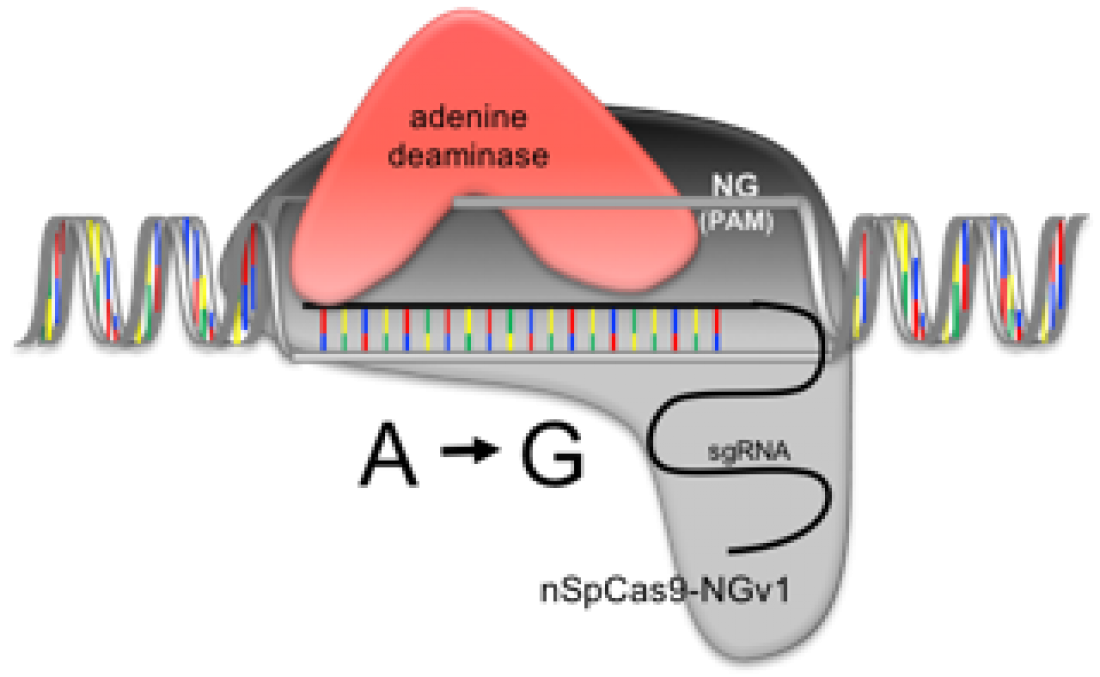Adenine in the target sequence is substituted by guanine.
Researchers in Japan have developed a new genome editing technology in rice. We combined adenine-to-guanine single base editing technology and Cas9 with an extended targeting scope and demonstrated that it is possible to efficiently introduce base substitution mutations in rice genes. We plan to expand our research to citrus fruit breeding using this new technology.
Clustered Regularly Interspaced Short Palindromic Repeats (CRISPR)/ CRISPR-associated protein 9 (Cas9) is a powerful genome editing tool. Cas9 can modify any desired target sequence, but is limited to the sequence just upstream of the protospacer adjacent motif (PAM). SpCas9 derived from Streptococcus pyogenes is the most widely used. The PAM sequence of SpCas9 is NGG (N is any base and G is guanine) and is the smallest of Cas9s known. Recently a new type of SpCas9-NG that reduced this restriction of PAM to NG has been reported. On the other hand, Cas9 usually causes deletions and insertion mutations in genome. The frequency of substitution mutation caused by Cas9 is very low and even if it occured, the substitution pattern was random. Recently, a technology was developed that can replace A (adenine) to G (guanine) at the targeted sequence. We fused these two latest technologies and examined whether it could replace A-to-G at a desired position in the rice genome. As a result, we successfully induced A-to-G base substitutions in the rice genome. We would like to further verify this technology and apply this technology to citrus, which is the most important crop of Ehime Prefecture, and lead to the development of new varieties.



